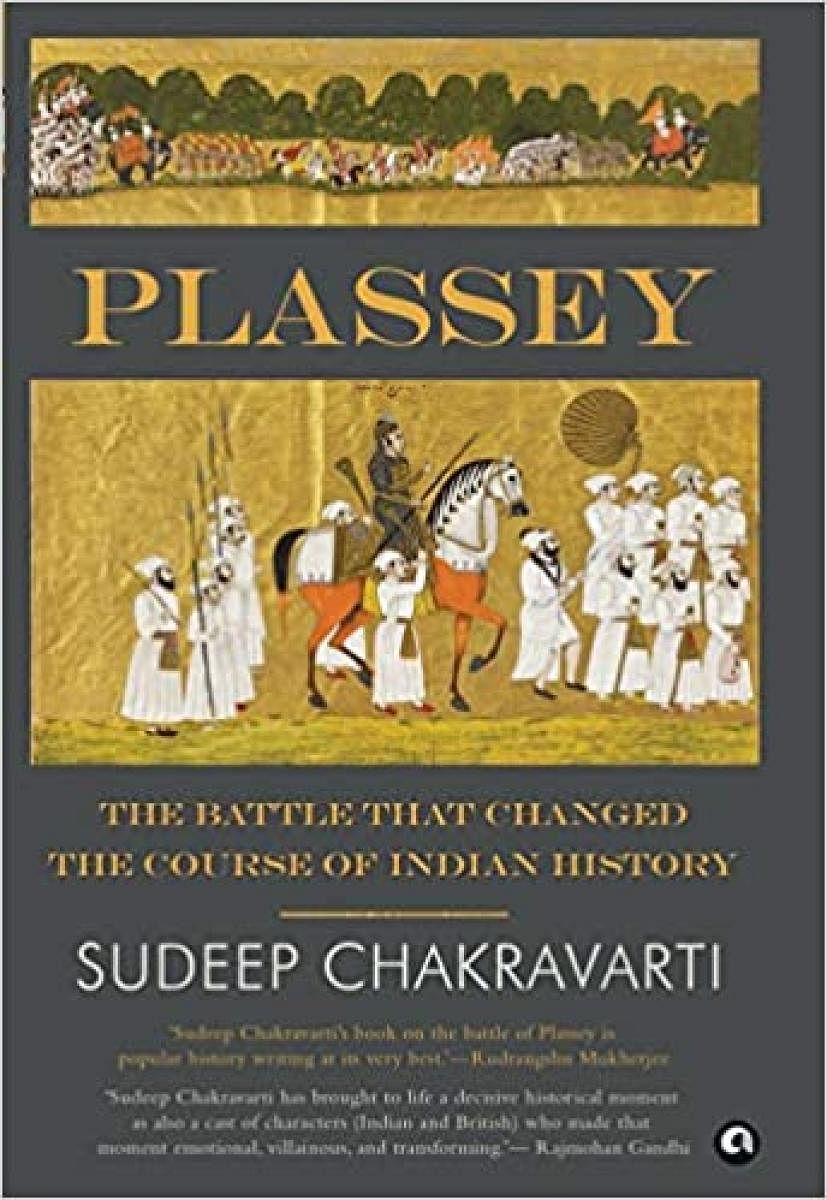
This book follows Sudeep Chakravarti’s The Bengalis, and is not nearly as successful. He sets out his stall in his introduction: ‘Some say India was won or lost at Plassey...Others claim an extension of the stumbling, fracturing Mughal India... lost to aggressive British mercantilism...Plassey is regarded as a mere skirmish...others view it as among the most significant battles... in the eyes of chroniclers of this school, Plassey was not a traitors’ parade, merely business as usual.. [was] the Black Hole ..real, exaggerated or fictional?’ The eager reader looks for answers to these questions.
Of 372 pages, 100 pages elapse before we arrive at a segment titled ‘The Build-up — the dynamics that crafted Plassey.’ Considerable time and space is spent on discursive and scarcely germane narratives. Some might find this methodology acceptable, others exasperating. The author wants to reveal how much he knows and accordingly spares us no detail, however minute. It matters little whether an event in Cuddalore took place in April or May, in Calcutta at 2 or 4 pm, or at Murshidabad at midnight or 8 am.
A prize worth winning
Murshidabad, especially its silk, was a prize worth winning, in Clive’s words, through ‘fighting, tricks, chicanery, intrigues, politics and the lord knows what.’ Double and triple agents were the norm, available to the highest bidder. Qasimbazar and its representative there would remain prominent for the East India Company (EIC) for more than a century, and well after Plassey. The financiers of Bengal, the Jagat Seth family, along with Umachand and Mohammed Wajid, an Armenian, were consistent and discreet supporters of the English and ‘the movers of the revolution,’ acting as negotiators and facilitators, while keeping their own pecuniary interests uppermost.
The EIC had a history of problems with the Murshidabad nawabs, with continuous mutual manoeuvres for advantage, and the Company’s factories at Qasimbazar and Dhaka were often under threat of being closed long before Plassey brought matters to a head. The French outpost at Qasimbazar was likewise threatened, even as the French at Chandannagar and the Dutch at Chinsura were alternately courted by the nawab and the EIC for support against the other even as the Europeans tried to remain neutral.
Nawab Sirajuddaulah’s taking of Calcutta in 1756, the English-French rivalry, and evidence from South India that Indian armies could be outmatched by smaller European ones were all important features of this background, as also were misuse by the EIC of its duty-free privileges and the building of unauthorised fortifications around its factories. After Plassey, the ‘business-led regime changes’ engineered by the EIC, would continue. Siraj demoted Mir Jafar and alienated other influential characters like Rai Durlabh and Jagat Seth, which cost him dearly. The EIC was able to play on the ‘extreme venality which prevails even amongst the highest ranks in Indostan,’ helped by Siraj’s ‘arrogance and temper’ making mistake after mistake; after seizing Calcutta from the EIC in 1756, he maximised the opportunity for greed. In early 1757, Calcutta is retaken by the EIC, which then reduced French Chandannagar as well.
A tangled web
Prior to the Plassey battle, Clive was assailed by doubts about Mir Jafar’s inclinations, as also Rai Durlabh and Yar Latif’s, apparently more so than about the disparity in numbers. Even Siraj’s advance guard of 6,000 was a thousand in excess of Clive’s and even with two thirds of Siraj’s numbers later immobilised by treachery, the ratio that remained was still 3:1 against Clive. The death of Siraj’s stalwart Mir Madan turned the course of the battle, the defectors abstained from action, and the 24-year old Siraj proved to be ‘a ruler with superior numbers...
inferior management [and] inferior weaponry.’ Clive’s forces suffered little — only 22 killed and 50 wounded.
The book is leavened with some amusing turns of phrase and is instrumental in revealing the skill of two significant European operators, William Watts and Jean Law, the English and French representatives to the Murshidabad court, both based in Qasimbazar. The four chapters dealing with the Plassey battle and its aftermath and the Epilogue are worth reading. But, the several illustrations could have been more usefully replaced by simple sketch maps showing the locations of various places frequently mentioned in the text.
Those times were indeed ‘a complete khichri of perception and reality.’ Sudeep Chakravarti, says the jacket cover, answers all the questions posed in his introduction; regrettably he does not. He forensically revels in the tangled web of historiography — gilding the lily, as he himself would no doubt put it — but arrives at no conclusions, remaining self-consciously agnostic. This is consequently a book for those who prefer the mass of minutiae to a straightforward narration, the trees to the wood.